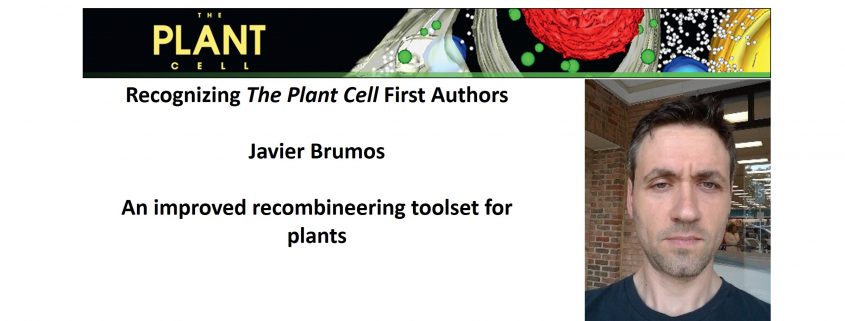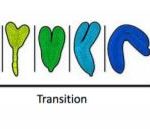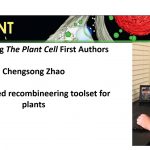Recognizing Plant Cell first authors: Javier Brumos
Javier Brumos, co-first author of An improved recombineering toolset for plants
Current Position: Research Scholar in the Alonso-Stepanova laboratory, Department of Plant and Microbial Biology, Program in Genetics, North Carolina State University, Raleigh, NC, USA
Education: Ph.D. in Biotechnology from Polytechnic University of Valencia, Spain
Non-scientific Interests: Outreach activities, Nature, Camping, Hiking, Biking, Photography, Soccer
Brief bio: I was born and raised in a small village in the countryside of Valencia, Spain. Living in a farming environment, I developed at a young age a passion for plants that led me to study Agronomical Engineering at the Polytechnic University of Valencia. As a PhD student, I employed functional genomics, molecular, and physiological approaches to study abiotic stresses in citrus at the Genomics Center at the Valencian Institute for Agronomic Research. Once I graduated, I wanted to investigate how plants integrate external cues with internal growth-and-development programs to generate adaptive responses. Since hormones are thought to be at the core of the signal integration process, for my postdoctoral training I joined the Alonso-Stepanova lab, a group with experience in the field of hormone interactions, to study plant hormones auxin and ethylene that control a wide range of developmental processes and play a key role in responses to biotic and abiotic stresses. Currently, I am involved in several projects examining the molecular mechanisms by which ethylene affects different developmental processes and triggers stress responses in plants. More specifically, my research aims to explore how ethylene regulates translation (as opposed to transcription) of particular transcripts, how plants make auxin, where auxin is produced, how auxin biosynthesis is regulated, and what the physiological significance of such regulation is. Related to this publication, we developed an improved recombineering toolset for plants to tag or edit plant genes in the context of bacterial artificial chromosomes that can be introduced back into the plant genome. We utilized this technology to generate translational reporter fusions for a large set of auxin-related genes.




